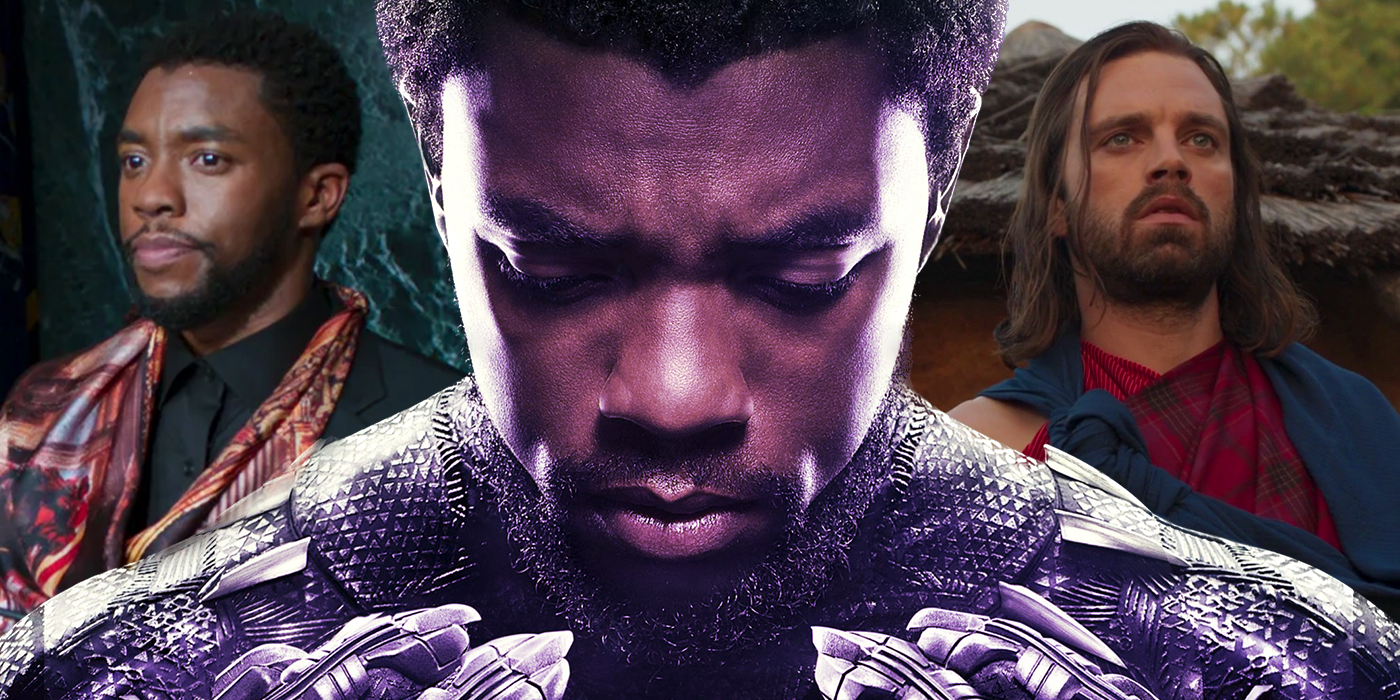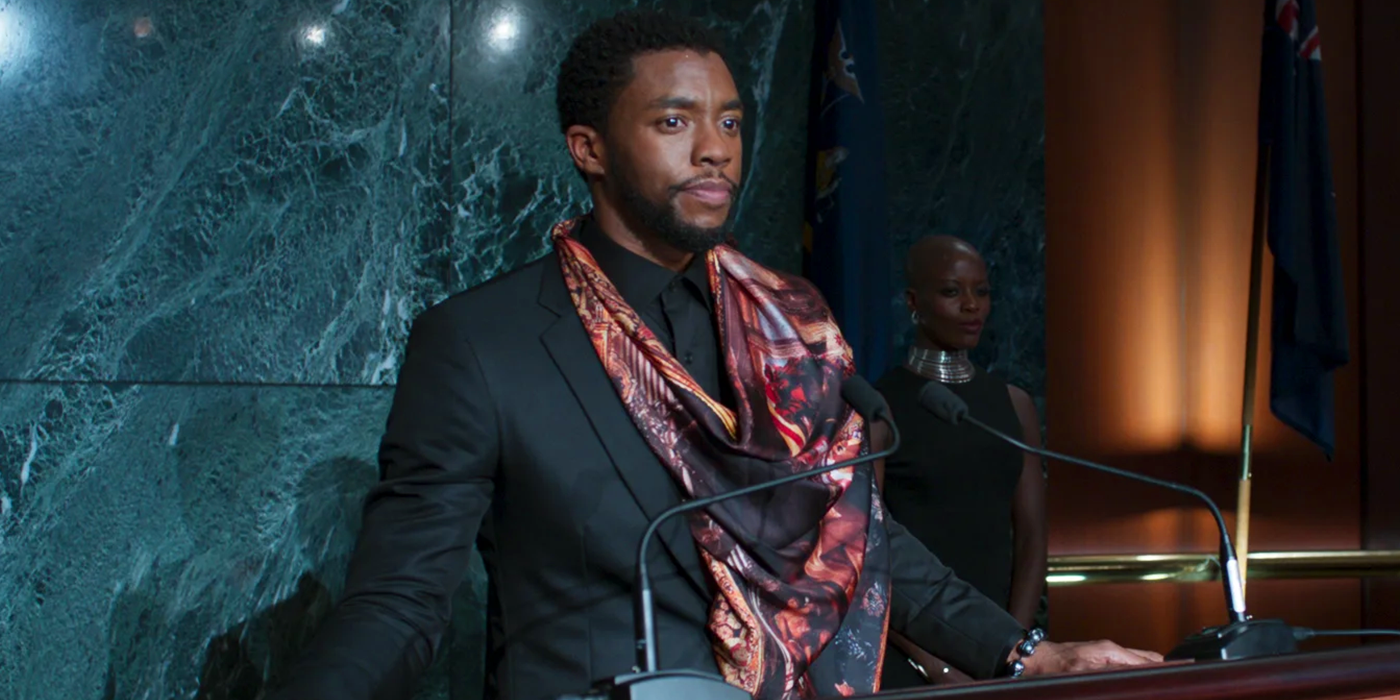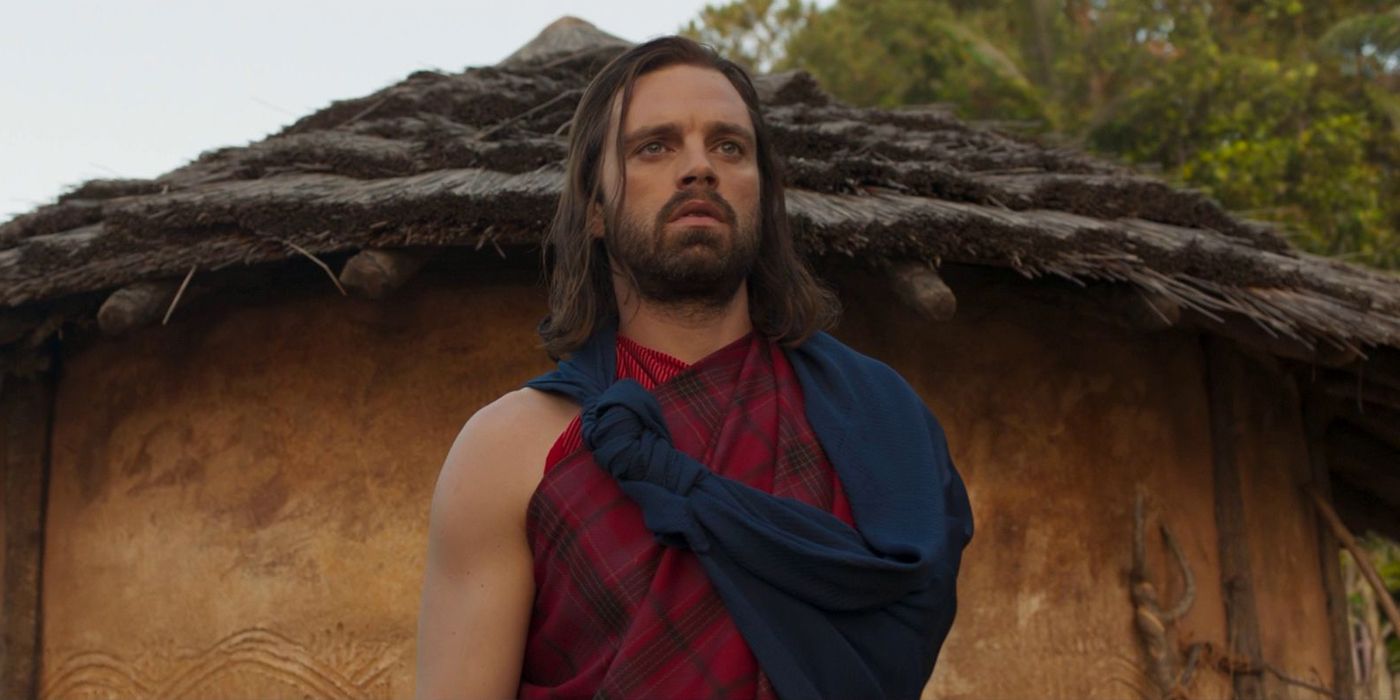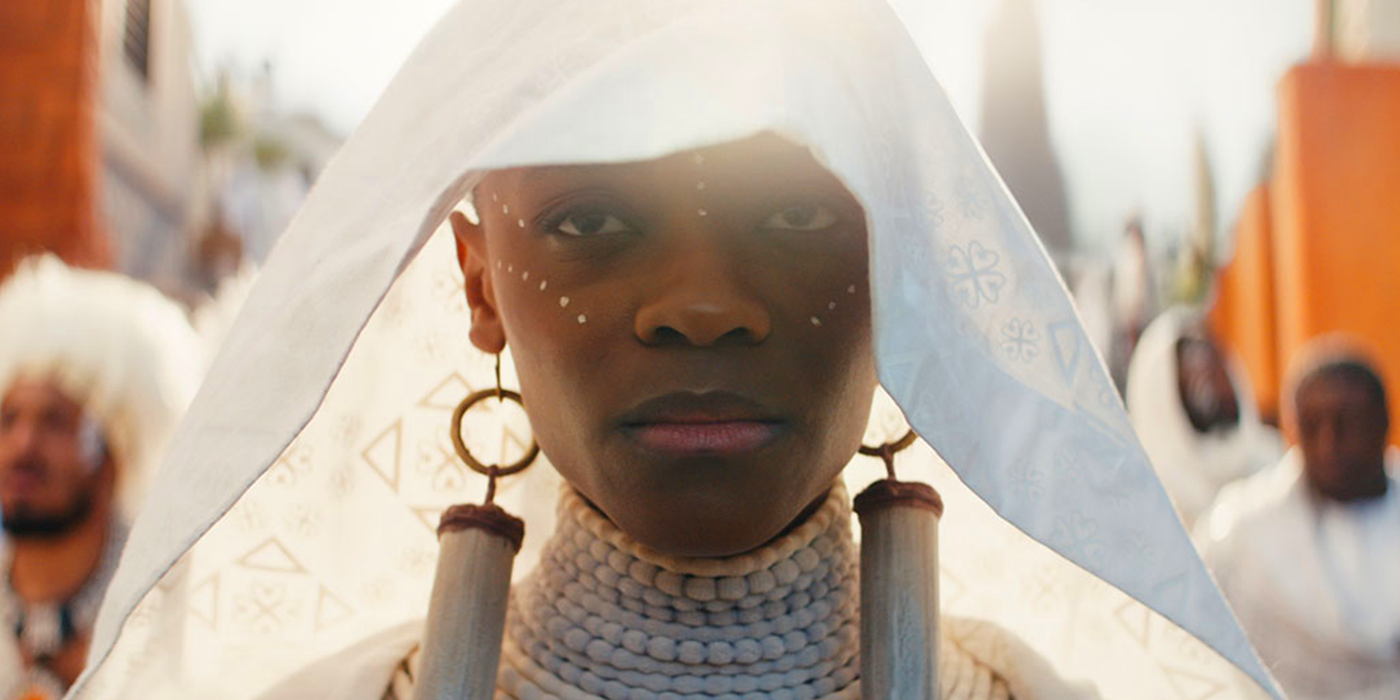Marvel Studios’ Black Panther ended with two post-credits scenes, setting up stories for the immediate future of the MCU. While Chadwick Boseman debuted as T’Challa, a.k.a. the Black Panther, in 2016’s Captain America: Civil War, Ryan Coogler’s Black Panther brought the Protector of Wakanda back to his home nation. Following its release in February 2018, Black Panther quickly became one of Marvel Studios’ most successful properties, grossing over $1.3 billion worldwide and being the first superhero film to receive a Best Picture nomination at the Academy Awards – and the first MCU film to win in multiple categories.
Black Panther detailed T’Challa’s return to Wakanda as King following the death of his father, T’Chaka, in Captain America: Civil War. While it initially seemed as though his reign would be a fruitful one, the appearance of his estranged cousin, Michael B. Jordan’s Erik “Killmonger” Stevens, a.k.a. N’Jadaka, throws a spanner in the works, as the long-lost Wakandan challenges for the throne and takes control of Wakanda and its weapons. Eventually, however, T’Challa seizes back control, though his peaceful reign may not last for long, as Black Panther’s post-credits scenes reveal an uncertain and uncharted future for Wakanda in the MCU.
Black Panther’s Mid-Credits Scene: T’Challa Reveals Wakanda’s Secret
As is customary for many Marvel Studios projects, Black Panther includes both a mid-credits and post-credits scene, the first of which follows the animated credits sequence. Unlike other projects in the MCU, however, Black Panther’s mid-credits scene is less of a tease for future stories but more of an actual conclusion to Black Panther’s own narrative. As Black Panther ends with T’Challa deciding to open up Wakanda to the rest of the world, allowing them to share resources, knowledge, and technology, Black Panther’s mid-credits scene sees the new Wakandan King take to the stage at the United Nations to make good on his promise.
During the scene, T’Challa mentions that the time for “building walls” has come to an end, and the world must learn to work as one if they are to advance. This is an incredibly positive note to end Black Panther on, especially since it proves that T’Challa’s battle with Killmonger actually made an impact, and T’Challa’s tumultuous rise to power has changed his perspective on his moral obligations to the world. Ryan Coogler’s decision to end Black Panther on a message of hope and unity was particularly poignant at the time of the film’s release and sets the stage for Wakanda to become an important location in the MCU’s future.
Black Panther Post-Credits Scene: Bucky Returns
In an effort to rid him of his HYDRA programming, Bucky Barnes was entrusted into the care of T’Challa and the Wakandans during Captain America: Civil War’s mid-credits scene. Sebastian Stan didn’t reprise the role for the main narrative of 2018’s Black Panther, but the film’s post-credits scene marked the return of the Winter Soldier, now dubbed the White Wolf by a group of Wakandan children. Bucky – now without his metal arm – is shown to be recovering in a hut outside the nation’s capital city, Birnin Zana, a.k.a. the Golden City, where he’s met by Letitia Wright’s Shuri, who tells him that he has much more to learn.
Bucky’s presence in Wakanda was teased during Black Panther, as Shuri proclaims that Everett Ross, portrayed by Martin Freeman, is “another white boy” for her to look after, implying the other to be Bucky himself. It’s no surprise that Shuri is the one to look after Bucky during his recovery, as she is Wakanda’s most gifted scientist, with a mind rivaling those of Tony Stark and Bruce Banner. While this scene favors mystery over answers, it does tease a potentially heroic return for Bucky Barnes in the MCU, as his Winter Soldier conditioning is finally gone, allowing him to join the ranks of Earth’s Mightiest Heroes in Avengers: Infinity War.
Looking Back: How Black Panther’s Credits Scenes Affected The MCU
At first glance, Black Panther’s post-credits scenes don’t give away too much about the future of the MCU, but since the film was released immediately prior to April 2018’s Avengers: Infinity War, these scenes lay the groundwork for some important stories in Phase 3’s first crossover event. T’Challa was shown to be revealing Wakanda’s secrets to the world in Black Panther’s mid-credits scene, and opening the nation’s borders, which would become incredibly important as the Avengers flooded to Wakanda during Infinity War to battle Thanos and his army. This scene also played a huge role in setting up the story for Phase 4’s Black Panther: Wakanda Forever.
After the 2020 passing of Chadwick Boseman, T’Challa was also written out of Ryan Coogler’s 2022 Black Panther sequel, and this, combined with the events of Avengers: Infinity War and Endgame, had convinced new Wakandan Queen Ramonda, played superbly by Angela Bassett, to shroud Wakanda in secrecy once again. Black Panther: Wakanda Forever confirmed that the world’s governments are desperate to get their hands on vibranium, and now that they know that Wakanda has it, an international war for resources could be on the cards. This could make Black Panther’s mid-credits scenes one of the most important moments in the MCU’s history.
As for Bucky Barnes’ continued recovery following Black Panther’s post-credits scene – and his five-year-long absence after Thanos’ Infinity War snap – Sebastian Stan reprised the role in The Falcon and the Winter Soldier on Disney+, allowing his character to be explored in more depth. The Falcon and the Winter Soldier showed Bucky to be attempting to make amends for his actions as the Winter Soldier, and forming a bond with the MCU’s new Captain America, Anthony Mackie’s Sam Wilson. Thanks to his recovery storyline in Black Panther, Bucky is now in the perfect position to become the de facto leader of the MCU’s Thunderbolts team in Phase 5.




